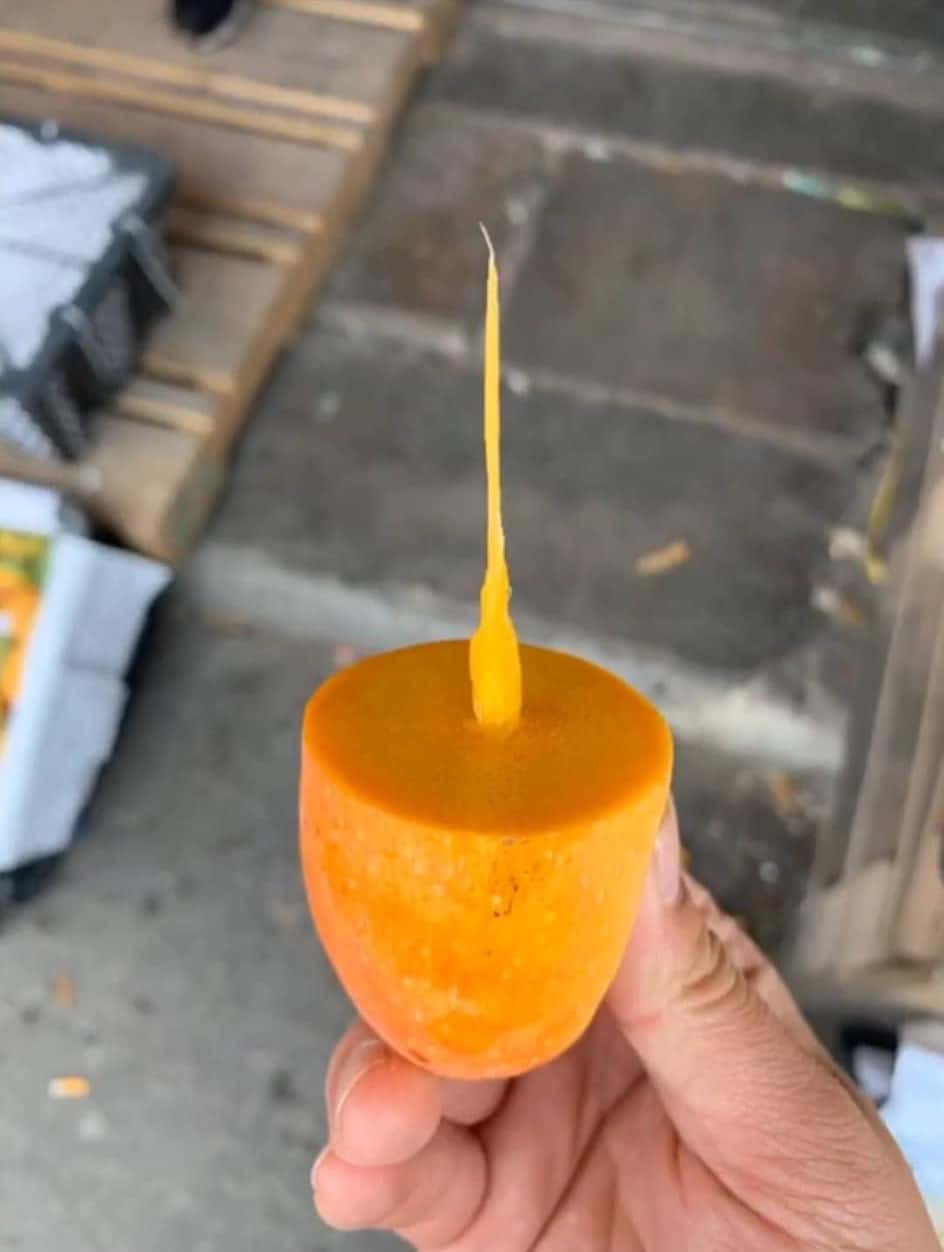Although mango has a great tropical flavor, enjoying it may be messy due to the large pit. However, Indian scientists have made it easier by developing seedless mango varieties.
Just like other mangoes, you can enjoy seedless mangoes in smoothies, salads, and other delicious culinary dishes.
So, go through this article to learn everything about seedless mangoes with the tips to grow and harvest them at home.
Table of Contents Show
Which Type of Mango Has No Seeds?
Basically, the mango is a pulpy fruit with a dense, combined sweet and tangy flavor and amazing aroma.
This single-seeded fruit has a hard pit between the amazingly tasty flesh.

There is only one variety of seedless mango in the world. However, this mango is not genetically modified, but it came from a process called parthenocarpy.
Moreover, this amazing mango variety is a cross between popular Indian varieties Ratna and Alfonso. Indian scientists first developed this mango in 1990.
Seedless mango weighs about 200-300 grams and has a very sweet taste. Moreover, the flesh is less fibrous than the seeded mangoes.
However, seedless mangoes are not totally seedless. It contains a very small pit, often unnoticeable while you consume. So all mangoes, even a seedless variety, have pits.
Nevertheless, you can not grow seedless mango trees from the seeds of such mangoes. Other mangoes can grow from the seeds, but you need to perform grafting to get seedless fruits.
Seedless Mango Vs. Seeded Mango
Basically, seedless mangoes can be less damaged from brushes due to the thick covering. In contrast, seeded mangoes can get wounded quickly.
Moreover, seedless varieties can stay fresh for a longer time, whereas seeded ones can rot quicker than seedless ones.
| Features | Seedless Mango | Seeded Mango |
|---|---|---|
| Seed Content | Inconspicious | Comes with hard seed |
| Flavor | Sweeter | Sweet and tangy |
| Texture | Softer than seeded variety | Firm due to seed inside |
| Availability | Hard to find | Widely available |
| Price | Expensive | Less expensive |
| Productivity | Less productive | More productive |
How To Grow And Harvest Seedless Mango?
Mango is a tropical plant, so to grow the seedless variety, ensure that you are living in warm and humid conditions.
Basically, to get a mango without seed, you must graft the scion of the seedless variety with the rootstock of another mango variety. However, it’s difficult to graft successfully at home.
So, it’s better if you buy seedless mango trees that are already grafted in the nurseries.
- Select the location that receives full sun and amend the soil with organic compost.
- Make the hole twice as deep as the rootball of the tree. Plant the tree and fix the remaining portion with soil.
- Water the tree whenever the soil becomes 2 inches dry. Don’t make the soil soggy, as it invites root rot.
- Monitor the tree regularly and fertilize it with slow-release fertilizer every month during the growing season.
- The grafted mango tree will bless you with delicious seedless fruits within 2-4 years.
- Harvest the fruits when they develop a sweet aroma.
- While harvesting, pick the fruits slowly, leaving a small stem on it.
- However, the tree may face pests and diseases during the young stage. so it’s better to use neem oil while the plant is young.
- After the plant completely establishes itself, use pesticides, fungicides, etc., whenever you notice any infestation.
From Editorial Team
Storing seedless mangoes!
Storing seedless mangoes is simple, just as you store normal mangoes. Store the ripe ones in the refrigerator and leave them at room temperature if they are still unripe.
Unripe mangoes can be ripened within 2-5 days at room temperature due to the ethylene content in the fruit. So, if you don’t store ripe fruits in the refrigerator, they will be overripe.


